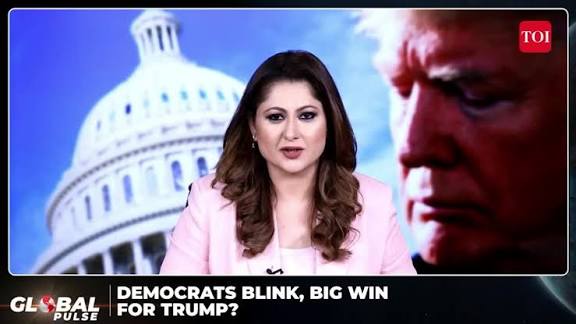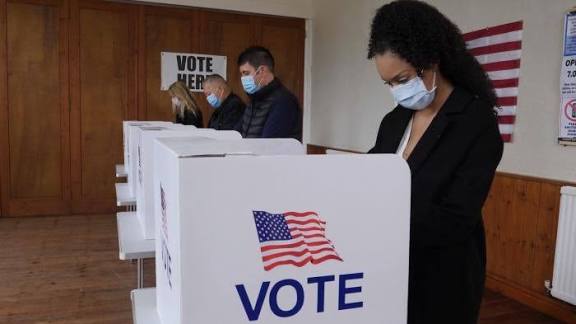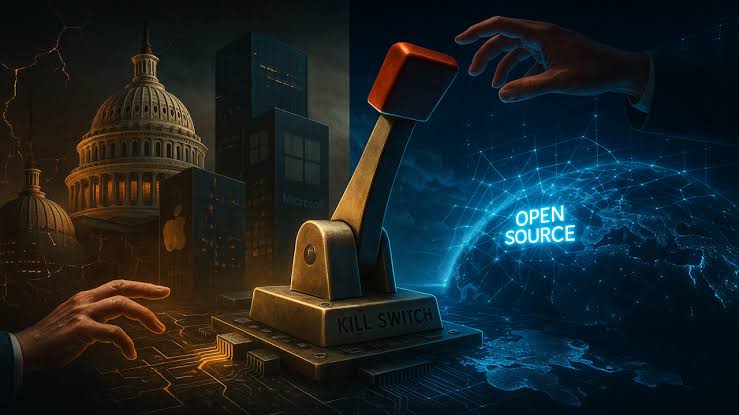Washington in Deadlock: Budget Talks Collapse Minutes Before Deadline

The US government began to shut down on Wednesday as lawmakers and President Donald Trump failed to break the budget impasse. Today we will discuss about Washington in Deadlock: Budget Talks Collapse Minutes Before Deadline
Washington in Deadlock: Budget Talks Collapse Minutes Before Deadline
In a dramatic and unsettling demonstration of political dysfunction, Washington plunged into crisis when last-minute budget negotiations collapsed just minutes before the federal funding deadline. The failure to pass essential appropriations legislation triggered yet another government shutdown—this one shaping up to be historic in length, scale, and political fallout. As federal workers brace for unpaid weeks and essential services grind to a halt, Americans find themselves once again caught in the crossfire of Washington’s deepening partisan divide.
The collapse highlights not only the ongoing struggle between Democrats and Republicans but also reveals structural weaknesses in the U.S. budgeting process. It raises urgent questions about leadership, governance, and the stability of American institutions at a time when global economic and geopolitical pressures are already running high.
Background: How the Crisis Unfolded

The federal government operates on a strict fiscal calendar, requiring Congress to pass 12 appropriations bills or a temporary continuing resolution (CR) to keep agencies funded. In this particular cycle, none of the full-year spending bills had been enacted by the deadline. What should have been routine legislative business turned into a showdown fueled by ideological differences and political posturing.
At the center of the dispute is a crucial healthcare issue: Democrats demanded that the new funding agreement include an extension of Affordable Care Act (ACA) premium subsidies slated to expire soon. These subsidies directly reduce insurance costs for millions of Americans.
Republicans, however, insisted on a “clean” CR—one without policy additions, arguing that funding the government must not depend on unrelated legislative conditions. In their view, Democrats were using the shutdown threat as leverage to force healthcare concessions.
Both sides dug in, and as the midnight deadline approached, negotiations deteriorated.
A Breakdown in the Final Hours
Despite several frantic meetings and closed-door sessions, the Senate voted on two competing short-term funding bills in the final hour—neither received enough support.
The Republican Proposal
A clean CR maintaining current spending levels
No extension of ACA subsidies
Short-term funding through late November
Failed due to insufficient bipartisan support
The Democratic Proposal
Short-term funding paired with a one-year extension of ACA subsidies
Included provisions aimed at offsetting projected Medicaid cuts
Gained favor within the Democratic caucus, but rejected by Republicans
Because Senate rules require 60 votes to advance budget legislation, both proposals fell short. The clock struck midnight, and the U.S. government officially entered shutdown.
What Makes This Deadlock Different
While the U.S. has experienced shutdowns before, this one stands out for several reasons:
1. The Length and Severity
This shutdown quickly became the longest in American history, surpassing previous lapses and affecting millions of people directly or indirectly. With no clear end in sight, analysts warned that prolonged disruption could have systemic consequences.
2. A Policy-Driven Stalemate
Unlike past shutdowns caused by procedural delays or narrow disagreements, this one is rooted in a major domestic policy debate with significant financial and political implications.
3. Institutional Stress
A gridlocked Congress and an administration willing to leverage the shutdown as a bargaining tool amplified tensions, revealing deeper structural weaknesses in the U.S. budgeting framework.
4. Economic Vulnerability
The shutdown occurred amid a delicate economic environment marked by fluctuating markets, slow job growth data, and global uncertainty.
Political Stakes for Both Parties
The deadlock reflects more than disagreement—it’s a strategic showdown with consequences for upcoming elections and future policymaking.
Democrats’ Perspective
Democrats argue they must protect low-income Americans from losing access to affordable health coverage. If ACA subsidies expire, millions could see steep increases in insurance premiums. To them, including the subsidy extension in the funding bill is not a political tactic but a moral necessity.
Republicans’ Perspective
Republicans believe the government should reopen immediately under a clean CR. They accuse Democrats of holding essential operations hostage to achieve unrelated policy wins. GOP leaders insist that negotiations over healthcare should occur separately, not tied to must-pass funding.
White House Involvement
The administration seized the uncertainty as an opportunity to push for broader fiscal reforms. Senior officials hinted at potential agency overhauls, spending reallocations, and even personnel changes. Critics argue the executive branch is using the crisis to consolidate power and reshape federal operations.
Human and Economic Impact
The shutdown’s consequences ripple far beyond Washington.
Federal Workers
Hundreds of thousands of federal employees have been furloughed, while many others are working without pay. They include:
TSA agents
Border Patrol officers
Air traffic controllers
National Park Service staff
IRS employees
The financial strain on these workers—many of whom live paycheck to paycheck—is immediate and severe.
Public Services
Numerous government functions have been disrupted:
National parks closed or operating with minimal staff
Passport and visa processing delayed
Federal courts preparing to scale back operations
Administrative services across multiple agencies paused
Welfare and Social Programs
Programs like SNAP, WIC, and housing assistance face rising uncertainty as funding reserves dwindle. Families depending on these programs could soon experience critical disruptions.
Economic Damage
Shutdowns directly reduce government spending and erode consumer confidence. Analysts estimate the economic hit could reach billions of dollars per week. If prolonged, the shutdown could:
Slow GDP growth
Weaken credit markets
Delay economic data releases essential for policymaking
Disrupt federal contracts affecting private-sector jobs
The Blame Game Intensifies
As the shutdown deepens, both parties have launched aggressive messaging campaigns to frame the narrative.
Republicans Blame Democrats
They argue that Democrats are exploiting the situation to force healthcare policy changes, jeopardizing national stability.
Democrats Blame Republicans
Democratic leaders insist that Republicans are prioritizing ideological rigidity over the needs of American families and federal workers.
Voter Sentiment
Public frustration grows as days turn into weeks. Historically, prolonged shutdowns have damaged the public image of the party seen as least willing to compromise. With elections approaching, both sides fear voter backlash.
Why the Shutdown Matters Beyond Political Theater
1. It Affects Millions of Americans
From federal workers to families relying on government benefits, real lives are disrupted.
2. Trust in Institutions Erodes
Each shutdown reinforces the perception that Washington cannot govern effectively.
3. It Creates Economic Risks
Beyond slowing growth, shutdowns destabilize markets and reduce business confidence.
4. It Sets Precedents
If shutdowns become routine bargaining tools, they may be weaponized more frequently—an alarming prospect for the world’s largest economy.
Pathways Toward Resolution
Though negotiations remain strained, several scenarios could unfold:
Short-Term Compromise
Congress may eventually agree to a CR that includes temporary healthcare measures to bridge the gap.
Extended Shutdown
If neither party shifts, the shutdown could extend indefinitely, forcing public outrage or severe economic consequences to break the impasse.
Comprehensive Deal
A more ambitious bipartisan agreement could bundle:
Full-year appropriations bills
Healthcare subsidy extensions
Spending reforms
Potential adjustments to entitlement programs
This scenario, while unlikely, could offer long-term stability.
Executive Action
The White House may attempt administrative workarounds or pressure campaigns to force a legislative breakthrough.
Lessons From the Deadlock
This crisis reveals several deeper issues:
1. Budgeting Reform Is Urgent
The current system incentivizes brinkmanship rather than responsible governance.
2. Policy Should Not Be Tied to Funding Deadlines
Critical national operations shouldn’t depend on unrelated policy negotiations.
3. Bipartisan Cooperation Is Needed
Without genuine cross-party collaboration, America risks recurring crises.
4. Public Pressure Matters
Ultimately, voters may need to demand systemic change to prevent future shutdowns.
Conclusion
The collapse of Washington’s budget talks—just minutes before the funding deadline—has plunged the country into a far-reaching crisis. More than a political standoff, it exposes deep structural flaws in the nation’s governing process and underscores the human and economic toll of partisan division.
As millions await relief and the economy braces for prolonged turbulence, one truth becomes unmistakably clear: the United States cannot afford a government that governs only at the brink of disaster. Whether this shutdown becomes a catalyst for lasting reform or just another chapter in Washington dysfunction depends on what happens next—and whether leaders are willing to put the nation’s well-being above political advantage.
How useful was this post?
Click on a star to rate it!
Average rating 0 / 5. Vote count: 0
No votes so far! Be the first to rate this post.
About the Author
usa5911.com
Administrator
Hi, I’m Gurdeep Singh, a professional content writer from India with over 3 years of experience in the field. I specialize in covering U.S. politics, delivering timely and engaging content tailored specifically for an American audience. Along with my dedicated team, we track and report on all the latest political trends, news, and in-depth analysis shaping the United States today. Our goal is to provide clear, factual, and compelling content that keeps readers informed and engaged with the ever-changing political landscape.




